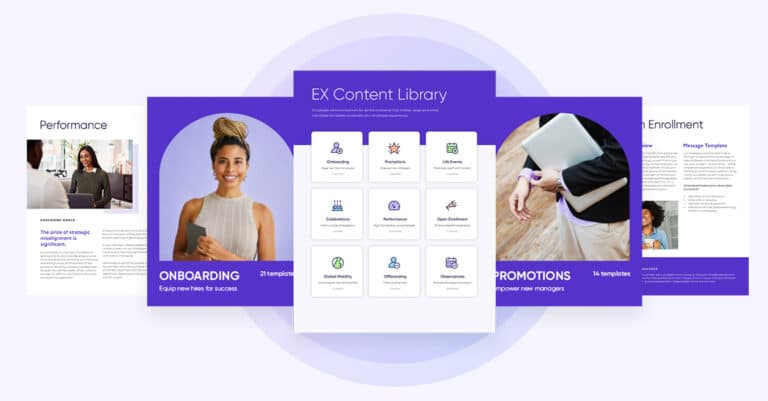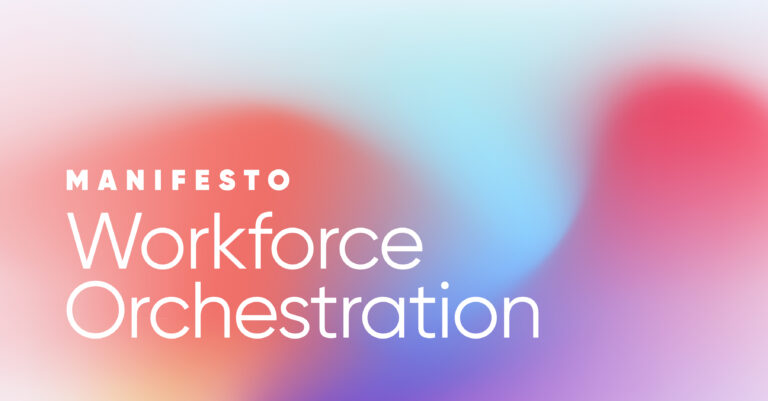Everyone in internal communications understands the importance of… communication. That’s a given. But does every one of them have a communications strategy in place? One that reaches all employees, on any and all important issues, which makes sure that everyone is on the same page? If you are in HR or internal comms and not operating under an umbrella of a strategy for your digital employee experience, you may not be providing your employees with the guidelines and information they need to do their job effectively.
Part of building that strategy is setting up internal communications norms, or rules, (explicit or implicit) that define an employer’s expectations of behaviors and best practices. With companies going remote during the Covid pandemic, and many of them sticking with a hybrid workforce for the foreseeable future, effective communication is more important than ever.
We’ve laid out a simple, actionable process you can use to plan, tailor, test, and optimize internal communications for every segment of your workforce:
In this new blog series, we discuss building out company norms sheets and enhancing your digital employee experience with some ground rules everyone is expected to adhere to. Today’s topic will be about norms for using Slack, the popular internal communication program, with examples of best practices and agreed-upon operating principles to share with your employees to help them respectfully connect and work together towards your company’s goals.
Examples of employee Slack norms
Act like an owner with Slack
Set up your work hours for Slack and customize notifications, away messages, and channels as you see fit. Slack can be customized so you can achieve a balance between your workday and personal hours. You can manage your settings only to receive notifications during your working hours and edit your profile so your teammates learn your work schedule. Use the Do Not Disturb feature and set your status to “offline, ” communicating to your employees that you are not working. This helps colleagues respect working hours. Here are different ways to set up Slack for your work hours. You can also integrate your Google calendar with Slack and it will show when you are in meetings and out of the office.
Schedule personal Slack messages to send during your working hours
When possible, or in a 1-1 Slack note, schedule your posts for your colleagues’ working hours. To learn how to “send later,” review this post. While this is not always possible, especially in global Slack channels, it can be helpful in 1:1 Slack notes that are not an emergency/priority. Also, make sure your time zones are set in your Slack user profile.
Utilize the @signal to target messages
If you are speaking directly to a colleague in a Slack question, use the @ symbol. This helps your colleagues cut through the Slack noise and see any unmissed specific questions. You can also use cc @ to ensure others have awareness.
Respond via threads
Threads help you create organized discussions around specific messages. They let you discuss a topic in more detail without adding clutter to a channel. Be sure to reply to a thread by hovering over the message you wish to reply to and click the “Reply in thread icon.”
Use @here and @channel strategically
Only use @here and @channel if it truly warrants everyone getting pinged with a message and it is time sensitive that everyone in the company be alerted. In most cases, do not use @here and @channel in the General Slack channel.
Manage your notifications
To help with notification overload, utilize Slack configurations. To change your overall Slack notifications, follow these steps. For specific channels or messages, review these suggestions.
Own your Slack work-life balance
Slack channels are there for important updates and knowledge sharing. Since everyone may work different hours based on work styles, customers, and time zones, you need to manage turning off Slack and setting your work hours in Slack.
Set expectations at the beginning of your Slack
If you need an immediate response, state that at the beginning of your Slack message. If it is “when you have time,” communicate that expectation as well. This helps your colleagues prioritize messages and to-dos.
Post to the correct Slack channel
To avoid “spamming” too many people, take the time to search and learn channels for correct posting. A few examples of public Slack channels to keep in mind (your company will vary) may include:
- General: An all-company Slack channel for company welcomes, information, etc. Reminder, do not do @here ping to this channel unless it is an emergency.
- Product: A channel to post your product questions.
- Marketing: Open to all employees to chat with and ask questions to the Marketing team.
- Sales: Open to all employees to chat with and ask questions to the Sales team.
- Based on your team and department, you may be a part of private channels and may want to join other public channels of your choosing.
Set your channel correctly
If you are creating a new Slack channel, first ensure only the necessary people are invited. Lock the group to help with search capabilities if it does not need to be available to all employees.
Conclusion
Setting norms so employees know what to expect and how to effectively communicate with each other should be a priority for any internal communicator or HR leader. Without an overall communications strategy for your entire team, employees are less informed, more susceptible to burnout and dissatisfaction, and more likely to contribute to company-wide miscommunication.
Setting up Slack norms (after all, nearly everyone uses it!) is just one part of a comprehensive comms strategy, of which we will be writing more about in the near future. Establishing these guidelines will ensure that everyone understands the documented correct way to communicate via this virtual platform, and go a long way towards building trust, engagement, and a positive digital employee experience within your teams and leadership.
Download our comprehensive guide to launching your workplace culture of inclusion:
Download PDF









